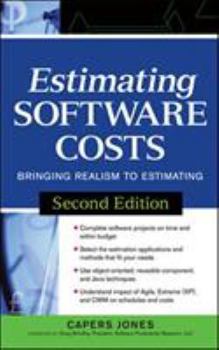Estimating Software Costs
Publisher's Note: Products purchased from Third Party sellers are not guaranteed by the publisher for quality, authenticity, or access to any online entitlements included with the product.
Deliver bug-free software projects on schedule and within budget
Get a clear, complete understanding of how to estimate software costs, schedules, and quality using the real-world information contained in this comprehensive volume. Find out how to choose the correct hardware and software tools, develop an appraisal strategy, deploy tests and prototypes, and produce accurate software cost estimates. Plus, you'll get full coverage of cutting-edge estimating approaches using Java, object-oriented methods, and reusable components.
Plan for and execute project-, phase-, and activity-level cost estimationsEstimate regression, component, integration, and stress tests
Compensate for inaccuracies in data collection, calculation, and analysis
Assess software deliverables and data complexity
Test design principles and operational characteristics using software prototyping
Handle configuration change, research, quality control, and documentation costs
"Capers Jones' work offers a unique contribution to the understanding of the economics of software production. It provides deep insights into why our advances in computing are not matched with corresponding improvements in the software that drives it. This book is absolutely required reading for an understanding of the limitations of our technological advances." --Paul A. Strassmann, former CIO of Xerox, the Department of Defense, and NASA





